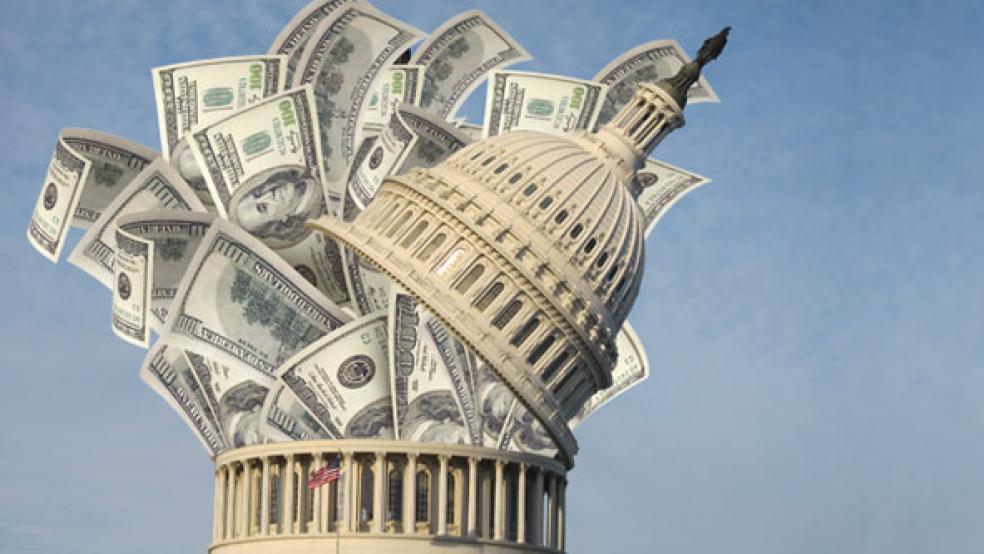February is Black History Month, March is National Women’s Month, and April? Well, it’s Financial Literacy Month, of course!
The U.S. government gave financial literacy its own month in 2003. April originally was titled “Financial Literacy for Youth Month,” but leaders quickly changed gears to include all Americans, young and old. Though financial literacy is perhaps less exciting than some other causes for most Americans to champion, U.S. leaders correctly determined that widespread financial literacy is crucial for the success of every citizen.
So then, why does the federal government not practice the financial responsibility that it preaches?
As of December 2017, we citizens had a collective household debt of $13.15 trillion (this figure includes IOUs on mortgages, student loans, credit cards and car loans). It seems that even with a month dedicated to fiscal responsibility, we are, by and large, comfortable with being in the red. Unfortunately, so is our government, and to a worse extent. The federal government, including the Social Security trust fund, owes a whopping $21 trillion, and that number is rising by the second.
The problem lies not only with the amount of money that the government owes, but also with who will be responsible for that debt. And it’s just the people whom Financial Literacy Month was originally intended to address: young Americans.
All young Americans should be aware of that enormous debt and what it means for their future. And they should be calling on their government leaders to employ the same fiscal responsibility that they espouse to our citizens.
The debt, though large, seems stable now. But that can change in an instant. The moment that investors decide the U.S. debt is unsustainable and try to sell out or stop buying new debt, the federal government and its leaders will have a huge problem on their hands.
The solutions to an unsustainable debt fall into three categories: raising taxes, cutting spending and growing the economy. Millennial Americans will be forced to utilize all of these in the future.
Raising taxes to gain revenue is one rather unpopular way to equalize the government’s balance sheet. Future Americans could see their take-home pay decrease significantly because today’s government has failed to employ sound fiscal policies.
The forced slashing of spending initiatives can be just as unpopular as tax hikes. A decrease in military spending and cuts to social programs like food stamps and the Children’s Health Insurance Program will be unfavorable collateral damage of an unsustainable debt. Cuts to Social Security perhaps may affect the most Americans — young taxpayers putting money into Social Security now may find that the program is less beneficial to them when they reach retirement age. And sometimes we forget: Young people from less-than-affluent families might have to pitch in out of their own pockets to help their parents — and later, themselves — if Social Security is cut sharply.
Finally, growing the economy to stabilize and reduce our debt-to-GDP ratio (currently at 103.8 percent, again including Social Security trust funds) sounds like the best solution to show investors that the U.S. is a failsafe investment. Sadly, like most ideal solutions, growing the economy is probably the most difficult. Policymakers have been promising faster economic growth for decades. If they had delivered, we wouldn’t be having this conversation. And unfortunately, running a huge debt is inimical to economic growth, so this task will be even harder.
Increasing GDP fast enough to balance out the quickly rising debt is a nearly impossible task. On average, the U.S. economy since 1930 has grown 3.3 percent annually. With the debt growing as quickly as it is, it would take a miracle for the economy to speed up quickly enough to match or surpass it. The economy would likely need another 1.5 percentage points per year of growth just to hold the debt burden as a percent of GDP constant over the next 10 years — while the retirement of the Baby Boom generation will be slowing the growth of the labor force, and necessarily of the GDP as well.
No one knows when the debt level will become a crisis. The U.S. economy probably won’t implode tomorrow, but if we continue to kick the can down the road, it will eventually come back to bite us. Why not be safe rather than sorry? The longer we procrastinate, the larger our accumulated debt — and the harder it will be to turn that growing debt around.
This Financial Literacy Month, we need to demand that our elected officials lead by example. Our political leaders have a duty to make the hard choices now to ensure a safe and prosperous future for the nation.
Joseph J. Minarik (@JoeMinarik) is senior vice president and director of research at the Committee for Economic Development. He served as chief economist at the White House Office of Management and Budget for eight years under President Clinton. He previously worked with Sen. Bill Bradley (D-NJ) on his efforts to reform the federal income tax, which culminated in the Tax Reform Act of 1986. He is coauthor of “Sustaining Capitalism: Bipartisan Solutions to Restore Trust & Prosperity.”
Caroline L. Ferguson is a researcher at the Committee for Economic Development. She graduated from Harvard College in 2017. Read CED’s new Debt 101 primer here.





